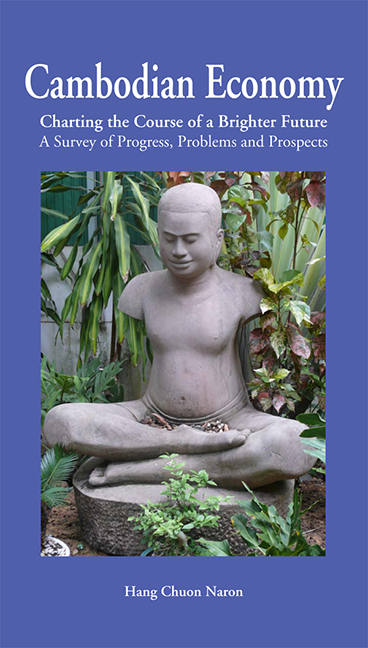 Cambodian Economy
Cambodian Economy from PART V - SERVICES AND INFRASTRUCTURE
Published online by Cambridge University Press: 21 October 2015
Background
Cambodia is a country with a rich diversity of cultural and natural resources. During the last decade the tourism industry has been growing to become one of the main pillars of economic growth. The rapid development of the tourism sector was attributed to the following factors: (i) attainment of peace and stability since the late 1990s; (ii) tourism attractions, especially Angkor Vat, which was listed as a World Heritage site in 1992; (iii) an increase in international and domestic travel; and (iv) the RCG's policies on tourism development, such as the open sky policy, visas on arrival and visa exemption for Cambodian living abroad (CDRI, 2007, p. 31).
Tourism comprises a major part of Cambodia's services industry. The push for the development of services came from the rapid expansion of tourism and hotel industry during 1994-1998. Tourism has had two set backs since then- first in 1997-98 when it was affected by the Asian Financial Crisis and the unsettled conditions prevailing in the country at that time; the second in 2003 following the SARS pandemics, the anti-Thai riots and the political uncertainty in the aftermath of the 2003 elections.
However, the RCG has made serious strides to implement policies that aim to: (i) promote marking and tourist products, with a focus on Phnom Penh, Siem Reap and Sihanoukville; (ii) develop products, with an immediate aim of upgrading standards in hotels, restaurants, tourism sites, services and infrastructure; (iii) improve access point through upgrading physical infrastructures, such as airport, and linking Cambodia to tourism international gateways in South-East Asia such as Bangkok, Kuala Lumpur and Singapore; (iv) improving the quality of Cambodia's work force through training; and (v) strengthening tourism sector coordination and management through institutional development of government ministries and agencies.
Since then the tourism sector has had a steady growth with the number of tourist arrivals reaching more than 2 million mark in 2008.
To save this book to your Kindle, first ensure [email protected] is added to your Approved Personal Document E-mail List under your Personal Document Settings on the Manage Your Content and Devices page of your Amazon account. Then enter the ‘name’ part of your Kindle email address below. Find out more about saving to your Kindle.
Note you can select to save to either the @free.kindle.com or @kindle.com variations. ‘@free.kindle.com’ emails are free but can only be saved to your device when it is connected to wi-fi. ‘@kindle.com’ emails can be delivered even when you are not connected to wi-fi, but note that service fees apply.
Find out more about the Kindle Personal Document Service.
To save content items to your account, please confirm that you agree to abide by our usage policies. If this is the first time you use this feature, you will be asked to authorise Cambridge Core to connect with your account. Find out more about saving content to Dropbox.
To save content items to your account, please confirm that you agree to abide by our usage policies. If this is the first time you use this feature, you will be asked to authorise Cambridge Core to connect with your account. Find out more about saving content to Google Drive.